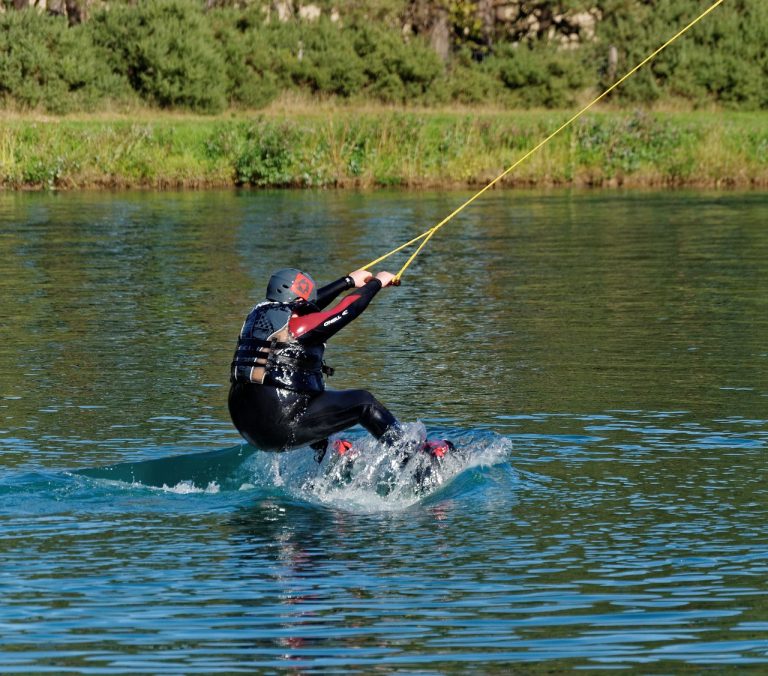General Rules of Swimrun
When it comes to navigating the waters of Swimrun, there are key guidelines that can steer you towards a successful race. From understanding the course markings to ensuring you have the mandatory safety gear, each aspect plays a crucial role in your performance. But what about the unspoken rules that can make or break your experience? Let's uncover the nuances of team dynamics, strategic equipment choices, and the hidden challenges that await beyond the surface.
Race Course Familiarization
Before beginning a Swimrun race, it is essential to familiarize yourself with the course layout to optimize your performance. Understanding the race's Land water transitions is crucial as they can greatly impact your rhythm and overall timing. These transitions are where you shift between swimming and running, and being prepared for them can give you a competitive edge. By knowing the location and distance between these transitions, you can mentally prepare for the shifts and adapt your strategy accordingly.
Terrain challenges are another aspect of the race course that require careful consideration. Whether you're facing rocky trails, steep hills, or slippery paths, being aware of the terrain challenges will help you anticipate the physical demands of the course. By studying the course map and elevation profiles, you can gauge the intensity of the challenges and plan your pace and energy distribution effectively. Additionally, knowing the terrain will allow you to choose the most appropriate footwear for the race, ensuring you have the necessary grip and support to tackle the course with confidence.
Team Equipment Requirements
To ensure a successful Swimrun race, teams must adhere to specific equipment requirements to enhance their performance and safety. Effective team communication and efficient gear organization are crucial aspects to consider when preparing for a Swimrun event.
Team Equipment Requirements Table:
| Equipment | Purpose | Examples |
|---|---|---|
| Wetsuit | Provides buoyancy and warmth in the water | Full-body neoprene wetsuit |
| Running Shoes | Offers comfort and support during running | Trail running shoes |
| Hand Paddles | Aid in propulsion through the water | Hydrodynamic hand paddles |
| Pull Buoy | Assists in buoyancy for legs during swimming | Lightweight and durable pull buoy |
Team communication is vital during a Swimrun race to ensure coordination and synergy between teammates. Clear and concise communication can help team members strategize effectively, adjust pace, and support each other throughout the race. Establishing signals or codes for different situations can enhance communication efficiency, especially in challenging environments where verbal communication may be limited.
Proper gear organization is key to maintaining a competitive edge during a Swimrun race. Teams should strategize on how to carry essential equipment comfortably and accessibly throughout the event. Utilizing gear such as multi-purpose bags or vests with ample pockets can help streamline the process of accessing gear during transitions between running and swimming segments. Efficient gear organization can save time and energy, allowing teams to focus on their performance and enjoy the race to the fullest.
Mandatory Safety Gear
Ensuring the safety of all participants, Swimrun races require teams to carry mandatory safety gear throughout the event. Water safety is paramount in Swimrun, and having the right equipment can make a significant difference in emergencies. Before diving into the race, familiarize yourself with the equipment checklist to ensure you have all the necessary items for a safe and enjoyable experience.
A basic equipment checklist for Swimrun typically includes a whistle for signaling, a race bib that must be worn visibly, a first aid kit for minor injuries, a compass for navigation in some races, and swim caps for visibility in the water. These items are crucial for both your safety and the safety of your teammate during the race. Additionally, some races may require specific safety gear such as a tow rope or a rescue buoy, so it's essential to check the race guidelines beforehand.
Water safety is a top priority in Swimrun, where participants often face challenging conditions in open water swims and rugged trail runs. By adhering to the mandatory safety gear requirements, you not only comply with the race regulations but also equip yourself with the tools necessary to handle unforeseen situations effectively. Remember, being prepared is key to enjoying a successful Swimrun race while prioritizing the well-being of everyone involved.
Course Markings and Navigation
Course markings and navigation play a crucial role in guiding participants through the Swimrun racecourse effectively. Properly placed course markings such as flags, signs, and buoys help you stay on track and avoid going off course. It's essential to pay close attention to these indicators to prevent unnecessary detours and maintain a steady pace during the race.
To navigate the course successfully, consider these navigation tips. First, study the course map before the race to familiarize yourself with the route and key landmarks. Understanding the terrain and where the course leads can give you a significant advantage. Additionally, during the race, keep an eye out for course markings at regular intervals to confirm you're on the right path. If you're unsure about the route, don't hesitate to ask race officials or fellow participants for clarification.
Remember that in Swimrun, you often transition between swimming and running, so being aware of course markings becomes even more critical. Stay alert and focused to follow the designated route efficiently. By utilizing course markings and implementing effective navigation strategies, you can enhance your overall race experience and performance.
Support and Outside Assistance
Let's talk about the key points surrounding support and outside assistance in Swimrun. It's all about teamwork over individuality, meaning you and your partner are in this together. Remember, there are limits on aid, and safety should always be your top priority.
Teamwork Over Individuality
When engaging in Swimrun, prioritizing teamwork over individuality is crucial for success, especially when it comes to support and outside assistance. To excel in this dynamic sport, consider the following:
- Effective Communication: Establish clear signals or verbal cues to convey needs and navigate challenges efficiently.
- Building Trust: Trust your partner's judgment and capabilities to work together harmoniously throughout the race.
- Planning Strategically: Develop a race plan that plays to each team member's strengths and ensures a synchronized effort.
- Coordinating Techniques: Practice seamless transitions between swimming and running to maintain momentum and optimize performance.
Limits on Aid
To maintain the integrity and competitive spirit of Swimrun races, strict limits are placed on aid, support, and outside assistance available to participants. When it comes to race strategy, it's crucial to plan your nutrition meticulously. Since aid stations are limited and support from outsiders is restricted, you must carry all necessary nutrition with you throughout the race. This restriction not only tests your physical endurance but also challenges your ability to strategize effectively. Proper nutrition planning can make or break your performance in a Swimrun event. By carefully considering your fueling needs and packing accordingly, you can optimize your energy levels and stay competitive throughout the race. Embrace this challenge as an opportunity to showcase your planning skills and determination.
Safety First
Given the limited aid and support available in Swimrun races, prioritizing safety through proper preparation and awareness of outside assistance guidelines is paramount. When it comes to safety in Swimrun, being self-sufficient and prepared can make all the difference. Here are some key points to keep in mind:
- Know Your Swimrun Essentials: Ensure you have all the necessary gear and equipment for the race.
- Understand Water Safety: Familiarize yourself with open water swimming techniques and practice in various conditions.
- Support System: Have a plan in place for how you and your teammate will support each other throughout the race.
- Outside Assistance Guidelines: Understand the rules regarding outside help and when it is acceptable to seek assistance.
Transition Area Etiquette
Navigating the transition area during a Swimrun event requires a balance of efficiency and consideration for fellow participants. To ensure a smooth transition experience, it's essential to respect the organization of the area and be mindful of your gear preparation. Here are some key etiquettes to keep in mind:
| Transition Area Etiquette | Description | Importance |
|---|---|---|
| Organize Your Gear | Arrange your equipment neatly to avoid causing obstacles for others and to easily locate what you need. | Ensures a swift transition and reduces chaos. |
| Respect Shared Spaces | Be mindful of other participants' areas and avoid spreading out beyond your designated spot. | Fosters a sense of community and fairness. |
| Communicate Effectively | Verbally communicate your intentions when sharing equipment or space with others. | Prevents misunderstandings and promotes teamwork. |
| Dispose of Waste Properly | Use designated bins for trash and recycling to maintain the cleanliness of the transition area. | Demonstrates environmental responsibility and respect for the surroundings. |
| Cheer on Fellow Participants | Encourage and support others during the transition to create a positive and uplifting atmosphere. | Boosts morale and camaraderie among participants. |
Environmental Responsibility
When participating in a Swimrun event, being environmentally responsible is crucial for preserving the natural surroundings and ensuring the sustainability of the sport. As a responsible participant, there are several key practices you should follow to minimize your environmental impact and contribute to the conservation efforts of the race.
- Waste Management: Properly dispose of any waste generated during the event. Avoid littering the course or the transition areas. Dispose of trash in designated bins to keep the environment clean and protect the local wildlife.
- Conservation Efforts: Support and respect any conservation initiatives in place for the race. Stay informed about the local ecosystems and follow guidelines to prevent any harm to the environment. By being mindful of your surroundings, you can help preserve the natural beauty of the race location.
- Eco-Friendly Practices: Embrace eco-friendly practices throughout the event. Use reusable water bottles or containers to reduce single-use plastic waste. Opt for biodegradable products whenever possible and minimize your ecological footprint during the race.
- Sustainability Initiatives: Get involved in sustainability initiatives organized by the event or local authorities. Volunteer for clean-up activities or fundraising efforts that support environmental causes. By actively participating in these initiatives, you can contribute to the long-term sustainability of Swimrun events and protect the environment for future generations.
Frequently Asked Questions
Can Participants Use Floatation Devices During the Swim Portions of the Race?
When it comes to swim portions of the race, remember, floatation devices can be a lifesaver. They provide safety and support, aiding your swim strategy. Just ensure your equipment complies with the rules.
Are There Any Specific Rules Regarding the Use of GPS Devices or Technology for Navigation During the Race?
Yes, you can use GPS devices or navigation technology during the race. These tools can help you stay on track and navigate the course efficiently. Just make sure to follow any specific guidelines set by the event organizers.
What Happens if a Team Member Is Unable to Continue the Race Due to Injury or Fatigue?
If your teammate can't continue due to injury or fatigue, you must make a tough call. Prioritize their well-being. Seek medical support at course checkpoints. Teammate assistance is crucial if they withdraw. Your bond matters most.
Are There Any Restrictions on the Types of Food or Drink That Participants Can Carry During the Race?
During the race, you have freedom in choosing your hydration options and nutrition choices. Fueling strategies and dietary preferences are up to you. Carry what keeps you going strong and fuels your performance.
Is There a Time Limit for Completing the Race, and What Happens if a Team Exceeds This Limit?
You'd think time's just a number, but in Swimrun, there's a limit. Exceed it, face the consequences. Team support crucial for injury management. Stay swift, don't linger too long in the race!






